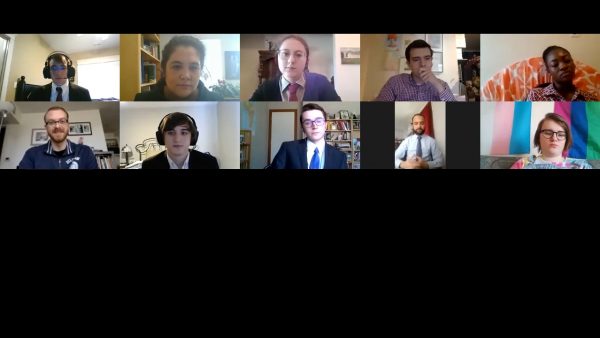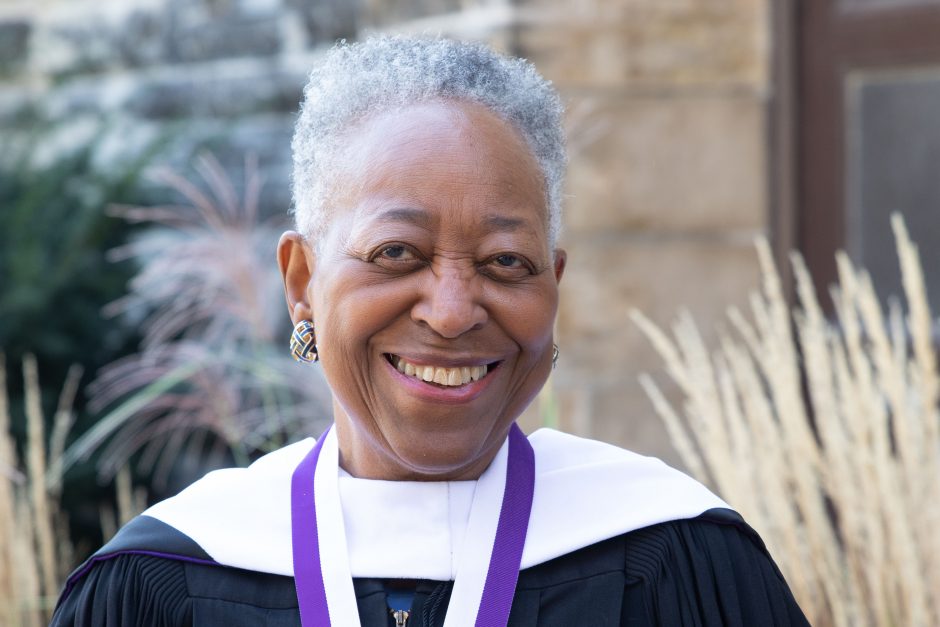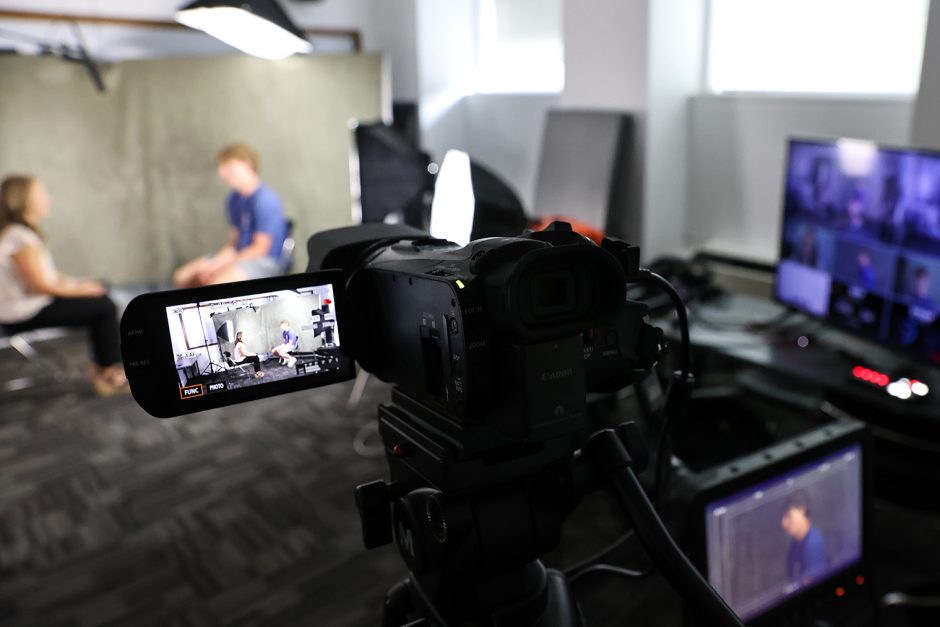Constitutional Law course foreshadows DACA case outcome
Every class teaches an important lesson, but one particular Cornell College class challenged students on a whole new level.
Meghan Yamanishi’s Block 7 class, Constitutional Law: The American System, took on a block-long simulation of three current Supreme Court cases, including Department of Homeland Security v. Regents of the University of California, better known as the DACA (Deferred Action for Childhood Arrivals) case.

The case that has had an impact on many Americans took center stage during the class that played out over the 3 ½ weeks of the block. It was the only class Cornell students were taking, so they could focus solely on the content.
“The goal of the course was that they would have a deeper understanding of how U.S. Constitutional law gets ‘made’ and the skills needed to make it by struggling through the material,” said Yamanishi, a Cornell Librarian who holds a law degree from UCLA. “It was a very challenging course, and the students really rose to the occasion.”
DACA background
The actual case started back in 2017 when President Donald Trump ordered an end to the Obama-era program, which protects undocumented immigrants brought to the U.S. as children.
Cornell College President Jonathan Brand joined more than 600 other colleges and university leaders in a statement in support of DACA. Cornell College’s name can also be found in this 2019 legal brief against the shutdown of the program.
On June 18, 2020, the Supreme Court ruled the government improperly terminated DACA, because the process the Department of Homeland Security (DHS) used when ending DACA was improper.
“The DACA case was a great illustration of how complicated the relationships between the branches of government can be,” Yamanishi said. “The executive branch has expanded in power relative to the legislative branch over time, as executive orders and agency regulations have increasingly been the source of law, rather than just legislation. Since these practices weren’t anticipated in the text of the Constitution, there aren’t many clear, bright-line constitutional principles for settling disputes about them.”
The course
Constitutional Law: The American System focuses on the structure of the U.S. government, as set up in the Constitution, and on how the Supreme Court’s decisions have interpreted and influenced that structure over time.
Yamanishi’s students took on a block-long simulation of the exact same DACA Supreme Court Case with students playing the role of current and past justices. She wasn’t surprised that the outcome of the Cornell-simulated case was “remarkably similar” to the outcome of the real court’s decision.
“They made essentially the same ruling, on the same grounds, and even ended up with the same Justice writing the opinion, John Roberts, as well as concurring and dissenting votes that mostly fell in line with the actual justices’ votes,” Yamanishi said. “One of our ‘historical’ justices, Hugo Black, who passed away almost half a century ago, voted with the majority; and it turns out that the real Chief Justice Roberts quoted the real Justice Black in the decision. Altogether, I thought the class did a remarkable job of understanding both the underlying legal issues and their respective justices’ approaches to legal interpretation.”
Sebastian Hough-Lecuona, a rising senior with a double major in religion and politics, played the role of Justice Hugo Black, asking questions and writing an opinion following Black’s style and philosophy.
“I learned a lot from this class, such as how to construct arguments the way lawyers do, how to frame your arguments, and how to read legal briefs,” Hough-Lecuona said. “I was happy to see that my class and I predicted the case correctly and that our reasoning for the decision was correct. I am glad the case turned out the way it did because I think it strengthens the rule of law in America.”
Rising senior Sunny Khan, an international relations major, defended the government’s stance in the simulation. Seeing the case play out in real life shortly after the class ended brought the whole lesson home for Khan.
“The Supreme Court citing the same factors we discussed in class, in the final decision and declaring a judgment almost made me feel I was personally involved with the case,” Khan said. “More importantly, I was happy with the outcome. Even though I had been arguing the legal aspect of the case, I morally desired a different outcome.”
Oliver Trousdale ’20 shared the sentiment. They played Justice Sonia Sotomayor.
“I am honestly surprised by this outcome but also very pleased. I do think that Congress needs to act to protect young people and their families,” Trousdale said. “The United States is the only home they know and we need to do better. Overall it was a challenging exercise but I feel I have a much better understanding of the law.”
Future applications
Kenny Capesius ’16, who is studying at UCLA Law School, knows understanding the law is vital for students considering a legal profession. Yamanishi asked him to play the role of chief justice in the simulation.
“I would strongly recommend that you consider taking one of the law-based courses offered at Cornell, such as this course taught by Professor Yamanishi,” Capesius offered as advice to students. “I think it’s helpful to have had an introduction to some legal concepts. If nothing else, it gives you insight into the type of readings and discussions that law schools require.”
Yamanishi says more students have become interested in this course because these larger structural roles of Constitutional Law have taken center stage. Abstract issues such as when the president can invoke emergency powers have an immediate impact on people’s lives.
And this is one case that has a direct impact on the lives of her students.
“The smaller things that we discuss, the ideas that we familiarize with, the policy designs we study all have practical, long-term, real-life implications,” Khan said.
It’s a lesson from a 233-year-old document that still challenges the thoughts of students of the 21st century.
“I think we’ve also seen how fragile the rule of law can be: Even high-minded, well-written laws and court decisions—and the Constitution itself—are only as just and effective as the people carrying them out, and only as strong as the people’s belief in them,” Yamanishi said.
Yamanishi also teaches a Constitutional Law: Rights & Liberties course, which focuses on the rights and liberties of individual citizens. It is offered Block 8 next year.
Tags: politics


